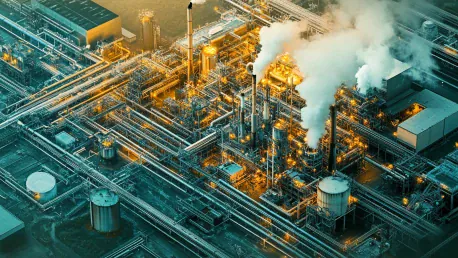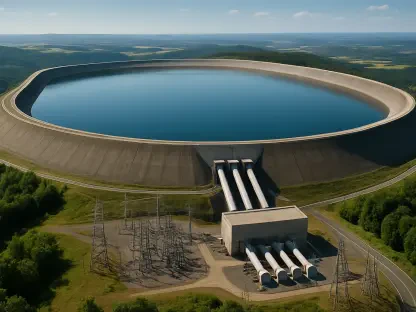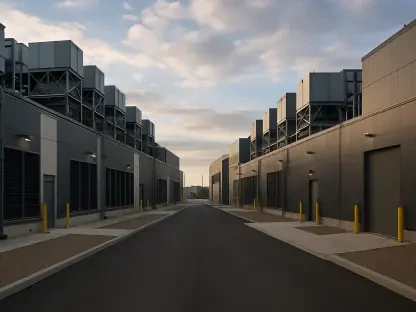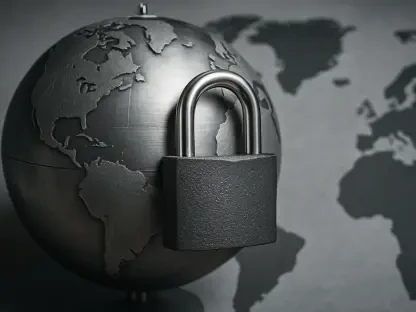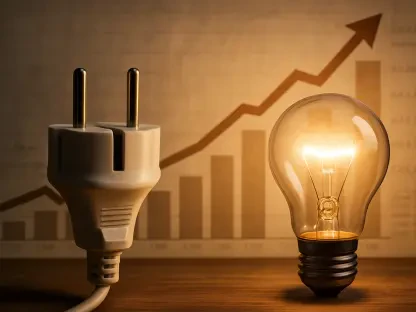With the world facing unprecedented environmental challenges, the U.S. Department of Energy (DOE) has announced two major initiatives to advance clean energy and bolster grid resilience. These initiatives include significant investments totaling $132 million, aiming to foster technological advancements and integrate sustainable practices across energy sectors. This investment demonstrates a commitment to mitigating carbon emissions and enhancing grid systems to meet growing energy demands.
Advancing Carbon Capture Technologies
Biological Conversion and CO2 Fermentation
One of the flagship elements of the DOE’s initiative involves investing $100 million to develop technologies that capture and convert carbon emissions into valuable products. Spearheaded by the Office of Fossil Energy and Carbon Management (FECM), this program specifically focuses on biological conversion methods. Among these methods, supporting algae growth and CO2 fermentation play crucial roles. By converting carbon dioxide into biofuels and other sustainable products, these techniques not only reduce atmospheric carbon but also generate economically viable outcomes.
In the biological conversion process, algae growth is harnessed for its natural ability to absorb CO2 through photosynthesis. When CO2 is fed into algae cultures, it promotes rapid biomass accumulation, which can then be processed into biofuels, animal feed, and even bioplastics. CO2 fermentation, another promising approach, utilizes specially engineered microorganisms to convert carbon emissions directly into chemicals, fuels, and other products. By employing these innovative technologies, the DOE aims to demonstrate the feasibility and scalability of carbon capture solutions that can be adopted commercially.
Catalytic Conversion and Mineralization Methods
Alongside biological methods, the program also emphasizes catalytic conversion and mineralization techniques, each with the potential to effectively transform carbon emissions into useful materials. Catalytic conversion refines thermochemical and electrochemical techniques to enhance reactor performance, thereby optimizing the conversion process. This involves developing catalysts that can accelerate chemical reactions, making it feasible to produce commercial-grade chemicals and fuels from captured CO2.
Mineralization, on the other hand, seeks to convert carbon dioxide into synthetic aggregates and alternative binders. This approach involves reacting CO2 with naturally occurring minerals to form stable carbonates, which can be used in construction materials such as concrete and building blocks. The DOE’s investment in these methods signifies a holistic approach to addressing carbon mitigation, ensuring that the captured carbon can be effectively repurposed for industrial applications. Overall, these projects will enable testing and market adoption of carbon-derived products like chemicals, fuels, and building materials.
Strengthening Grid Resilience
Innovative Grid-Edge Projects
The second major initiative from the DOE addresses grid resilience, with a $32 million investment to encourage grid-edge innovations. These projects aim to integrate distributed energy resources and tackle the increasing demand for electric vehicle (EV) charging and industrial energy needs. A notable project under this initiative is the ACCELERATING Connectivity Initiative in Minnesota, which focuses on residential thermal load management. By improving home energy efficiency and leveraging smart technology, this project seeks to balance and reduce peak energy demands.
In Indiana, a Purdue University project collaborates with rural electric cooperatives to enhance energy efficiency and resilience in underserved areas. The project implements smart grid technology and advanced analytics to monitor and optimize energy use, improving reliability and reducing costs for consumers. The RECHARGE Initiative in California targets energy challenges in urban areas like San Jose and Fresno County, working towards resilient grid systems that can accommodate future energy demands without compromising service quality.
Smart Charge Management for EVs
As part of the grid resilience efforts, the DOE has allocated funds to develop smart charge management systems to facilitate seamless EV integration into the existing grid. Three standout projects have received funding: One Energy Enterprises in Ohio, Baltimore Gas & Electric in Maryland, and EV.energy across multiple states, including California and Florida. These projects focus on creating advanced microgrid technology and introducing grid-aware EV charging solutions.
Additionally, they aim to demonstrate vehicle-to-grid (V2G) technologies, which enable EVs to not only draw power from the grid but also return stored energy back to it during peak demand periods. Such innovations are crucial for managing the anticipated surge in EV usage, ensuring that the grid remains stable and efficient. By investing in these smart charging and V2G systems, the DOE is helping to lay the groundwork for a future where electric vehicles become seamlessly integrated into the broader energy ecosystem.
Conclusion: A Comprehensive Approach to Sustainability
In light of the world’s unparalleled environmental challenges, the U.S. Department of Energy (DOE) has introduced two major projects designed to promote clean energy and enhance grid resilience. These projects involve substantial investments amounting to $132 million, aimed at encouraging technological advancements and the adoption of sustainable practices across different energy sectors. Such an investment indicates a strong commitment to reducing carbon emissions and improving grid systems to handle increasing energy needs.
Additionally, this effort aligns with the broader goal of transitioning to a more sustainable and eco-friendly energy infrastructure. The funding will support research and development in renewable energy technologies, such as solar and wind power, energy storage solutions, and smart grid innovations. These advancements are crucial in meeting the country’s energy demands while minimizing environmental impact. By fostering collaboration between government agencies, private companies, and research institutions, the DOE is paving the way for a cleaner and more reliable energy future.
